The School of the Art Institute of Chicago (SAIC), founded in 1866, is one of the most prestigious and highly rated art schools in the United States, and also enjoys a high reputation internationally. The following is a detailed introduction to the school:
History
The school was originally founded by local artists through dues and donations in a house rented on Clark Street. Four years later, it moved to an Adam Street building, but it was destroyed in the Chicago Fire of 1871.
In 1878, business leaders formed a board of directors and established the Chicago Academy of Fine Arts, extending the school's mission from education and exhibitions to collections. In 1882, it was renamed the School of the Art Institute of Chicago and taught in a classical European style.
In 1934, the first fashion show was held, the Bachelor of Fine Art degree was established in 1936, the Master of Fine Art degree was established in 1940, the first abstract painting class was offered in 1944, and the first Art Technology Department and Film Center were established in 1972.
Geographic location
The school is located in the Loop area of Cook County, the most prosperous part of Chicago, on the shore of Lake Michigan, adjacent to Millennium Park and Grant Park. The surrounding transportation is convenient, and there are multiple lines of the CTA subway system, including red, blue, green, brown, pink, and purple, to reach the school and the art gallery.
Department and major
Undergraduate major:
Pure Art Major: Focuses on the study of art history, art theory and art criticism, while focusing on the training of practical skills. It has a teaching team composed of full-time core teachers and external experts and scholars.
Architecture, Interior Design and Design Major: The undergraduate course of interior design lasts for four years, and the core courses include advanced design studios.
Photography major: provides a wide range of opportunities for students to master photographic technical and conceptual skills, and students can access the resources of Chicago's creative photography community.
Art Education Major: has three undergraduate degrees in art education, art teaching, and pure art with a focus on art education. Based on the strong connection between the school's disciplines, there are new developments in many aspects.
Ceramics Major: involves research and innovation in the fields of art, design, and crafts, and encourages conceptual and technical innovation.
Graphic (Printing) Media Major: Undergraduate students have the opportunity to serve as teacher assistants, and courses include beginner, intermediate, and advanced courses such as etching and lithography.
Performance and Animation Major: closely combines critical, theoretical, and historical research, and plays an important role in human aesthetics and artistic expression.
Textile Studies Major: integrates various forms of art production for cross-disciplinary learning.
Painting and Drawing Major: The faculty team is composed of many global first-line creative artists, and alumni have achieved outstanding achievements.
Graduate Majors:
Photography Major: has modern thoughts, philosophical theoretical research, and top teachers. Students can attend other departments to broaden their knowledge.
Sculpture: Offers the largest, most comprehensive, and most diverse sculpture program in the United States, focusing on themes such as permanence, public practice, space and location, and systemicity.
Textile Studies: Students can learn a variety of textile structures, techniques, and processing methods.
Fashion Design: Known for its interdisciplinary characteristics with an art foundation.
Graphic Design: Graduate students are creative and teachers have a variety of graphic design skills.
Art Education: In-depth training of professionals in the field of art education.
Art Therapy: Provide students with professional knowledge and practical training related to art therapy.
Architectural Design: Cultivate students' professional ability and innovative thinking in the field of architectural design.
Interior Architecture: Focus on the research and practice of interior space design and architectural environment.
Vision and Criticism: Improve students' critical thinking and analytical skills in the field of visual arts.
Teaching Features
Pure Art and Freedom: Known for its pure art and free learning style, students are not restricted to major in specific subjects, and can freely choose the content and method of learning to give full play to their creativity and personality.
Practical Teaching: Emphasis on practical operation, through cooperation projects with museums, galleries, enterprises, etc., let students accumulate experience in actual creation and design, and improve their problem-solving ability.
Interdisciplinary Teaching: Many professional courses integrate knowledge from multiple disciplines, such as the interdisciplinary characteristics of fashion design majors, and teachers of graphic design majors have multidisciplinary knowledge, etc., to cultivate students' comprehensive literacy and innovation ability.
Small class teaching: Adopting a small class teaching mode, the teacher-student ratio is reasonable, and teachers can pay attention to the development of each student and provide personalized guidance and feedback to students.
Faculty Strength
The school has a high-level teaching team. The teachers are not only fruitful in academic research, but also have rich practical experience. They can provide students with professional guidance and inspiration to help students improve their artistic creation and theoretical research level.
Academic Resources
Students can use the Ryerson and Burnham Library located in the art gallery. The school also has the John M. Flaxman Library and MacLean Visual Resource Center. Each department also has its own collection, providing students with rich art resources.
Ryerson and Burnham Library mainly collects art and architectural art and related historical materials; John M. Flaxman Library has a collection of more than 120,000 books, magazines, films, etc., with a preference for modern art; MacLean Visual Resource Center has collected nearly 560,000 slides and online digital databases.
Campus Life
The school will hold various art exhibitions, lectures, workshops, performances and other activities to provide students with opportunities to display their works and exchange learning, enrich their extracurricular life and broaden their artistic horizons.
Students have the opportunity to participate in community art projects organized by the school, combining art with social services, and enhancing their sense of social responsibility and practical ability.
As one of the important cultural and art centers in the United States, Chicago provides students with rich off-campus art resources and cultural activities, such as visiting world-class museums, galleries, theaters, etc., to inspire students' creative inspiration.
Famous Alumni
Walt Disney, Georgia O'Keeffe, Wen Yiduo, Orson Welles, Joe Manswitto, etc.
Tuition and Application
Tuition: 2024-25 Academic year undergraduate tuition is $1,848 per credit, graduate tuition is $1,926 per credit.
Application requirements: IELTS score of 6.5 for undergraduates at the Chicago campus; IELTS score of 6.5 for graduate students at the Chicago campus.
-

Harvard University
-
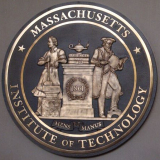
Massachusetts Institute of Technology
-
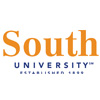
South University
-

University of West Georgia
-
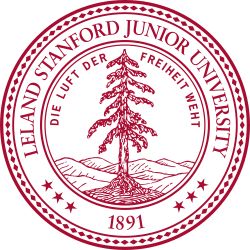
Stanford University
-

Northwest Nazarene University
-

Hawaii Pacific University
-
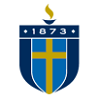
Shorter University
-

Nova Southeastern University
-
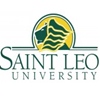
Saint Leo University
-

Mesoamerican University
-

Istmo University
-

Mariano Galvez University of Guatemala
-

Regional University of Guatemala
-

Galileo University
-

Francisco Marroquín University
-

Rafael Landívar University
-

University of the Valley of Guatemala
-

University of San Carlos of Guatemala
-

Technological Institute of Tlaxcala Plateau
-

Golfo University
-

Technological University of South Sonora
-

Technological University of Huejotzingo
-

Tizimín Institute of Technology
-

Chilpancingo Institute of Technology

